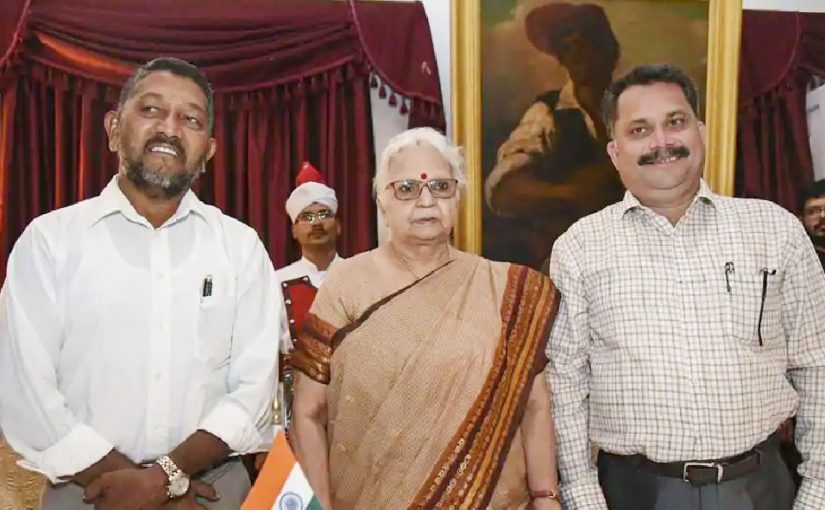RE-SHUFFLE: With Parrikar refusing to step down and two members of the Cabinet — Pandurang Madkaikar and Francis D’Souza — very sick, Nilesh Cabral was appointed Power minister and Milind Naik was given the portfolio of Urban Development held by Francis D’Souza
BY RAJAN NARAYAN
Manohar Parrikar was brought into politics by the RSS to whom he owes his prime loyalty. This is the first part of the political history of Parrikar, from his metamorphosis from being the first IIT to be MLA, to a sick chief minister running Goa from the All India Institute of Medical Sciences
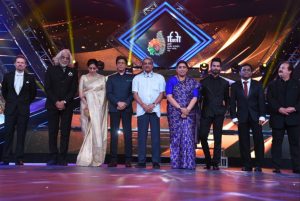
When Manohar Parrikar was first elected to the Legislative Assembly from Panjim he was very popular with reporters. They were very impressed with his Indian Institute of Technology degree and his pseudo humility. Parrikar in turn turned on the charm and had the press eating out of his hand with his humour which was mostly sarcastic.
There were only four MLAs elected from the BJP in the 1997 Assembly. My then chief reporter, Julio D’Silva, brought Manohar Parrikar to see me in the office of the Herald (I was the editor there at the time). I was also impressed with the young technocrat who was a big change from the procession of 13 chief ministers in the previous 10 years.
In his time as an MLA, Parrikar projected himself as a moderate and did not reveal the hard-core Rashtriya Swayamsevak Sangh (RSS) chadiwala avatar of his. When the Vishwa Hindu Parishad (VHP) organized a yatra from the island of Diwar to New Delhi to protest against the celebration of the 500th anniversary of Vasco Da Gama’s conquest of Cochin and Goa, Parrikar did not participate.
FIRST WARNING
He first gave a glimpse of his total opportunism by being the first to extend support to a group of rebels, led by Francisco Sardinha of the Congress, against the then chief minister Luizinho Faleiro.
When Sardinha revolted against Faleiro, Mauvin Godinho was part of the revolt.
Mauvin, who has now joined the BJP, is an old friend and enemy of Parrikar. When Parrikar was in the Opposition to the Luizinho Faleiro government, he had filed a criminal case against Mauvin for extending rebates to steel rolling mills in defiance of the Cabinet.
Since Mauvin was part of the Sardinha government supported by Manohar Parrikar and his three BJP MLAs, Parrikar tried to withdraw the police complaint he had filed against Mauvin.
To his frustration the courts did not permit him to withdraw the corruption complaint. The case incidently is still going on because Mauvin successfully managed to delay it for almost 20 years.
FIRST SHOT AT THE KODEL
Under Francisco Sardinha the government became bankrupt. Its credit rating was very low. To pay salaries and meet basic
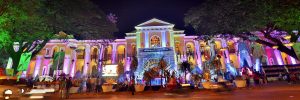
expenses Sardinha asked the EDC to float a bond issue of `150 crore. The commission given to the agent who was to raise the funds was as high as 5% — as against the normal 0.5%. Using this excuse Parrikar abruptly withdrew support to the Francisco Sardinha government which of course collapsed.
Another section of the Congress, including some of those who were supporting Sardinha, decided to extend support to Parrikar to form a government, and that is how Manohar Parrikar became the chief minister for the first time.
It was also the beginning his now notorious U-turns. Before he toppled the Sardinha government he had promised that he would scrap the bond issue which Sardinha has asked the EDC to float. When Manohar Parrikar became the chief minister he allegedly asked the then managing director of the EDC why the commission was so high. The very candid MD of the EDC Surya Narayana told him that half the commission was meant for the chief minister. Despite this, Manohar Parrikar did not cancel the tender, though we don’t know who took the 2.5% commission earmarked for the chief minister.
The revolt had come very close to the elections. In any case, without consulting the Cabinet, Manohar Parrikar decided to dissolve the Assembly and sought fresh elections.
CREATING MONSTER-RAT
In the elections that were held the BJP fell far short of the majority needed to form the government. It was then that we saw Manohar Parrikar — the manipulator. Manohar Parrikar got the support of Sudin Dhavalikar who was elected on the Maharashtrawadi Gomantak Party (MGP) ticket. Parrikar was so desperate to have a majority and occupy the chief ministers chair that he even persuaded Babush Monserrate and Mickey Pacheco to join his Cabinet.
Babush Monserrate was a creation of Manohar Parrikar. To tempt Babush, Manohar Parrikar gave him the Town & Country Planning portfolio. Babush used this to sell Goa to land sharks not just from Goa, but from all over the country by coming up to the notorious RP 2011. For a price developers could get any land — whether it was agricultural, orchard or forest — converted into settlement and commercial zones.
Historically the floor area (FAR) index which decides how high the building can go was limited to the height of the coconut tree — an average of 9 metres. Under Babush the FAR soared — which led to all the six and eight storeyed buildings along the Miramar-Dona Paula bypass road.
All the ‘Models’ projects and the ‘Shalom’ building were a result of the conversions and higher FAR permitted by Babush.
But Parrikar was still insecure as many of the MLAs supporting his first full-fledged government did not belong to the BJP. With the help of Babush, several Congress and UGDP MLAs resigned their seats and re-contested and got elected on the BJP ticket.
This became necessary because of the amendments in the anti-defection law whereby when an MLA changed parties, he had to
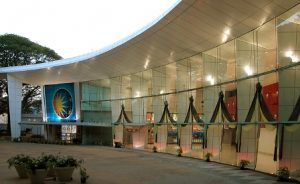
quit the Assembly and get himself re-elected on the ticket of the party he wanted to join.
Babush not only persuaded two other MLAs besides himself — Pandurang Madkaikar and Isadore Fernandes — to resign, he also financed their campaigns to get re-elected on the BJP ticket. This was a time when Babush was allowed to add four more floors to the Shalom building which meant an addition revenue of `50 crore.
But even with the conversion of non-BJP MLAs to the BJP, Parrikar still had a shaky majority. An independent candidate Filipe Neri Rodrigues, who was supporting Parrikar, decided to rebel. Parrikar got the Speaker, who belonged to the BJP, to physically throw Filipe Neri out of the Assembly, unfortunately for Parrikar, the Congress was in power at the Centre and fairly or unfairly the then governor decided to dismiss the Manohar Parrikar government.
BACK TO POWER
Manohar Parrikar came back to power in the 2002 election with a clear majority of 21 seats. This was partly achieved by encouraging all the senior Congress leaders to contest on BJP tickets. The tragedy for the BJP and Manohar Parrikar is that it is always dependent on imports from other parties to form the government. The BJP has never been successful in building its own base. The majority of its cadres are former supporters of the MGP.
In Goa no politicians have permanent loyalty to any political party. So it was not surprising that even former BJP and Congress stalwarts like Ravi Naik and Ramakant Khalap were among those who joined the BJP and successfully contested elections on BJP tickets, giving Parrikar his second term as chief minister.
Because of these machinations, there were too many greedy MLAs who wanted their pound of flesh and every drop of blood for extending support to the BJP, led by Parrikar. Parrikar could not keep his MLAs happy and therefore could not complete his term as chief minister.
Although Parrikar has been chief minister four times he has never completed the full term as chief minister. His opportunity to serve a full term as chief minister after the 2012 election was aborted when Narendra Modi forced him to become the defence minister of the country.
DELUSIONS OF GRANDEUR
Right from the beginning Manohar Parrikar had delusions of grandeur. When Atal Bihari Vajpayee became the PM of a BJP
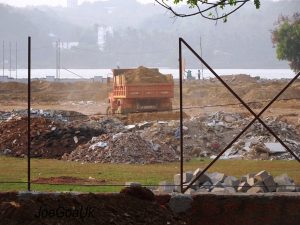
government at the Centre, Manohar Parrikar managed to persuade him to shift the international film festival (IFFI) from New Delhi to Goa.
This despite the fact that Goa has no infrastructure at all for holding such a major international event. In his obsession with IFFI Parrikar destroyed the oldest, and only, football stadium that Panjim had — built by Dayananad Badodkar the first chief minister.
Parrikar spent more than `200 crore to build a multiplex at government expense, which was then leased out to Gujarat-based Inox. Goa is probably the only state in the country where the government owns a multiplex!
The old GMC complex was taken over by the ESG, which was created to organise IFFI. The old municipal market was demolished to create space for IFFI. Kala Academy, where opening and closing ceremonies were held for the first IFFI, was renovated at a cost of `50 crore. A floating jetty was created at the Kala Academy complex so that the foreign delegates staying at the Taj hotel could come by boat to the IFFI venue. Never mind that the jetty was never used, although it has been repeatedly renovated.
This was the first but not the last example of Manohar Parrikar wanting to set up huge projects which would be of little or no benefit to Goa.
Even after 15 years of IFFI, and Goa being made the permanent venue, there is no infrastructure for holding IFFI.
Because Kala Academy was not big enough, for some years the IFFI inauguration and closing ceremonies were held at the location of the demolished Bandodkar stadium in huge air-conditioned tents that could accommodate up to 5,000 people.
In more recent years the closing and opening ceremonies are being held in the Shyama Prakash Mukherjee Stadium in Dona Paula. Vivek Menezes, in an article which sounds like an obituary, in the Mint, recalls seeing Manohar Parrikar for the first time controlling traffic during the inauguration for the first IFFI. What he does not know is that Goa missed the IT bus because of Manohar Parrikar’s obsession with IFFI.
Ramakant Khalap who was the IT minister had invited all the top guys in IT, including Narayan Murthi of Infosys and Asim Premji of Wipro — two of the largest IT companies. Instead of attending the dinner hosted for them, Parrikar was busy examining and supervising the drainage arrangement as Inox is built close to, if not on top of, the St Inez nullah.
HONEYMOON PHASE
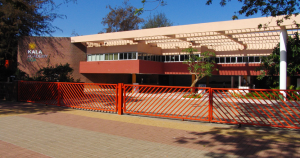
When he first became chief minister, the honeymoon between me and Manohar Parrikar was still thriving. Immediately after he was sworn in as chief minister at the Raj Bhavan he came straight to my place to seek my blessings. I remember toasting him with wine in my underground basement flat.
Thereafter during the first month as chief minister he invited Tara and me twice for an exclusive private dinner in the private dining room of the International Centre. The only other person present was his youngest son, who is married to the daughter of one of the biggest builders, Deshprabhu Desai, who, not surprisingly, is the head of the CREDAI Goa chapter.
On both occasions Parrikar did not pay the bills. Since the restaurant had been given put on contract, the owner of the restaurant sent the bill to me at my residence. The first time I kept quiet. The second time I called up Parrikar and asked him what was the point of inviting us and making us pay the bill. His answer was that the International Centre had asked him for a grant of several crores and he thought they would not charge for the dinners!
Another bond between us was lady nicotine. Parrikar, in a attempt to give up smoking, had given up buying cigarettes, but not smoking them. So at every party where both of us were present he would rush up to me and borrow my cigarettes.
Later he took to chewing tobacco instead of smoking despite the advice of his close friend, cancer specialist Shekhar Salkar. I don’t know to what extent the smoking contributed to his pancreatic cancer.
UNMASKING THE EGO
Our cordial relationship came to an abrupt end when there was a dengue epidemic in Panjim. The sewage pipeline of the Neptune hotel was mixed up with the drinking water pipelines. This resulted in the contamination of the water supply in the heart of Panjim, which had popular restaurants like Café Bhosle and Café Real.
Due to the epidemic of dengue which broke out even the pani puri gaddos on Miramar beach were shut down. All the major restaurants, ranging from Café Bhosle to Delhi Darbar, were all closed down.
My better three-quarters, Tara, and I, had gone for a function at O’Coqueiro, Porvorim, where somebody told us that despite the dengue epidemic in Panjim, Parrikar himself continued to eat ros omlette in dirty gaddos next to Alankar cinema in Mapusa.
Parrikar used to work very hard when he was chief minister very often up to midnight in the official resident at Altinho. But
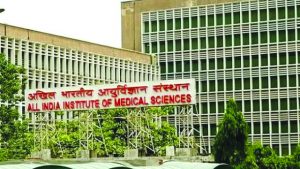
he never stayed in the official residence and went back to Mapusa every night. I suppose at that time of night, the only place you could get food was at 5-star hotels and at gaddos, which used to remain open till 3 am.
We went to Alankar cinema to find for ourself. We met Parrikar’s favourite omelette wala and saw how filthy the surroundings were. The next day Tara wrote a tongue-in-cheek story for the Herald titled “Is this where the chief minister of Goa eats?” highlighting the unhygienic conditions.
Parrikar was furious. He called up Tara at 6 am in the morning — the moment he received the newspaper and saw the write up. He told Tara that he never went to the gaddo. I took the phone from Tara and told him we have photographs of him having ros omelette, and that the gaddo owner boasted about how he used to keep his gaddo open waiting for Parrikar. Then he told us that he didn’t go to the gaddo to eat — only to drink coconut water. I called him a liar.
Before I could reach the office at 10 pm he had spoken to the owner Raul Fernandes and asked him to issue a directive that Tara should not be allowed to write in Herald. This is when I discovered that he was not only a liar, he was totally intolerant of criticism, and was a ego maniac who thought he was the smartest of them all and that everyone was dumb compared to him.
(to be continued next week…)
